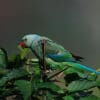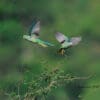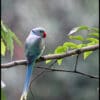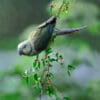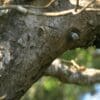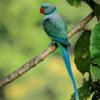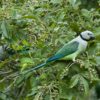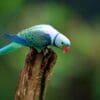Malabar Parakeet
Also known as:
Blue-winged Parakeet
Also known as:
Blue-winged Parakeet

Nicopsitta

columboides
Size:
38 cm (14.8 in)
Weight:
Not recorded.
Subspecies including nominate:
one
Colour Adult:
Male-Grey head and upperparts; green and cheeks; area around eyes green; blue tinge on forecrown; black chin and stripe on lower cheeks; black collar encircling hindneck, bordered below by green/blue band; green/blue lower back to upper tail coverts; green upper wing coverts scalloped with yellow/green; yellow/green underparts washed with pale blue; blue central tail feathers tipped with yellow, the side tail feathers green tipped with yellow; red upper mandible tipped with yellow, brown lower mandible. Eye yellow. Female-Green/blue band around hindneck absent; green on face and forecrown minimal; pale green mantle, breast and abdomen, often suffused with grey. Beak black.
Colour Juvenile:
Grey of head and upper parts green instead; black stripe across cheeks and around collar duller and narrower; blue/green band under black stripe absent. Beak pale orange in very young birds. Eye grey.
Call:
Calls are discordant and shrieky; also scolding. Also sharp notes repeated in short bursts.
More Information:
Content Sources:
CITES
BirdLife International
Cornell Lab of Ornithology/Birds of the World
Parrots: A Guide to Parrots of the World, Juniper and Parr, 1998
Parrots of the World, Forshaw and Cooper, 1977. 2010 edition
Parrots of the World, Forshaw, 2006.
Lexicon of Parrots, Thomas Arndt.
Captive Status:
Uncommon
Longevity:
—
Housing:
3 x 1 x 2 m (9.8 x 3.3 x 6.5 ft) outside aviary in warm temperatures, with adjoining inside aviary, or walk-in avairy minimum length 4.5 m (14.7 ft). Use metal construction.
Diet:
Seed mix of safflower, millet, canary, buckwheat and some sunflower; millet spray; fruits such as: apple, pear, banana, cactus fruits, orange; vegetables such as: carrot, celery, peppers, green beans and peas in the pod; green leaves such as: Swiss chard, lettuce, sowthistle, dandelion and chickweed; egg food for rearing; complete pellet.
Enrichment:
Bird-safe (unsprayed and non-toxic) branches with blossoms, pine, elder, willow and fir boughs, vegetable-tanned leather toys and wood block toys. Light bather, so provide overhead misters or shallow water bowls.
Nest Box Size:
Vertical box 9″ x 9″ x 24″ (22.8 cm x 22.8 cm x 61 cm).
Clutch Size:
4
Fledging Age:
6 weeks
Hatch Weight:
—
Peak Weight:
—
Weaning Weight:
—
World Population:
Unknown but recorded as common throughout range, stable.
IUCN Red List Status:
Least Concern
CITES Listing:
Appendix II
Threat Summary:
Not globally threatened. A BirdLife “restricted-range” species. Is considered to have a medium dependency on forest habitat and tree cover is estimated to have declined by 3.7% within its mapped range over the past three generations. Therefore it is tentatively suspected that this may have led to a 1-19% decline in the species’ population over the same period.
Range:
Western Ghats, India from lat. 19N south to S Kerala.
Habitat:
Found from 450-1000 m (1476-3280 ft) in upland evergreen rainforest, both primary and secondary. Also found in deciduous forest with bamboo and abandoned coffee and rubber plantations.
Wild Diet:
Feeds on grain, seeds and fruits especially Ficus figs, also buds, petals and nectar, notably Erythrina and Grevillea plants. A crop pest on Sorghum, other cereals, vetches Dolichos and orchard fruit.
Ecology and Behaviour:
Found in family groups or small flocks. Associates with Plum-headed Parakeet at lower elevations.
Clutch and Egg Size:
4 spherical eggs, 28.0 x 24.5 mm (1.1 x 0.9 in).
Breeding Season:
December-March. Nest is high up in tree cavity.
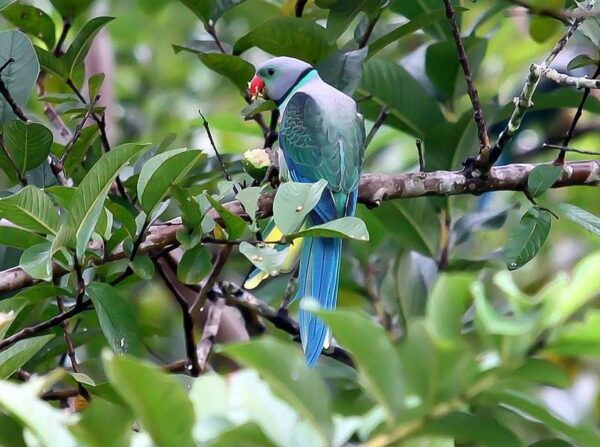
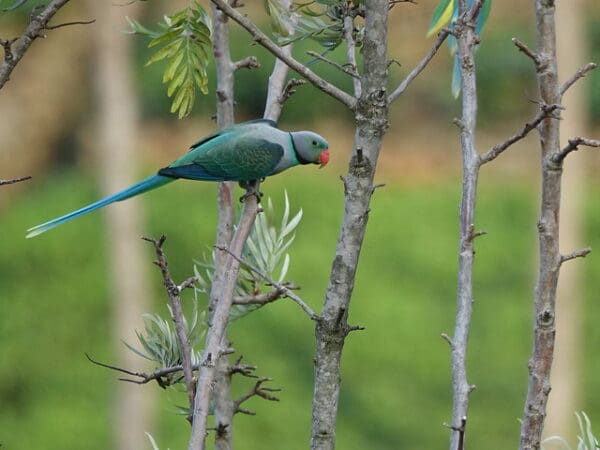
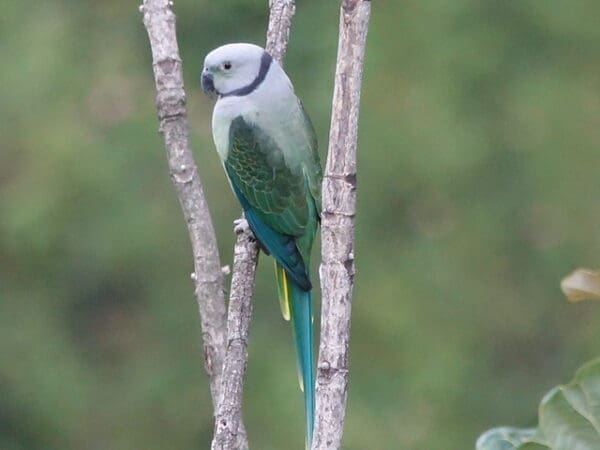

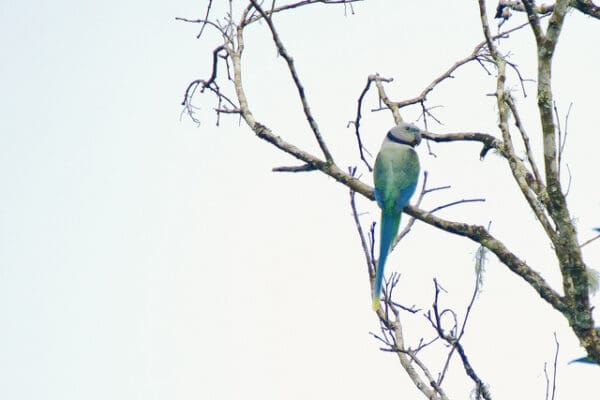


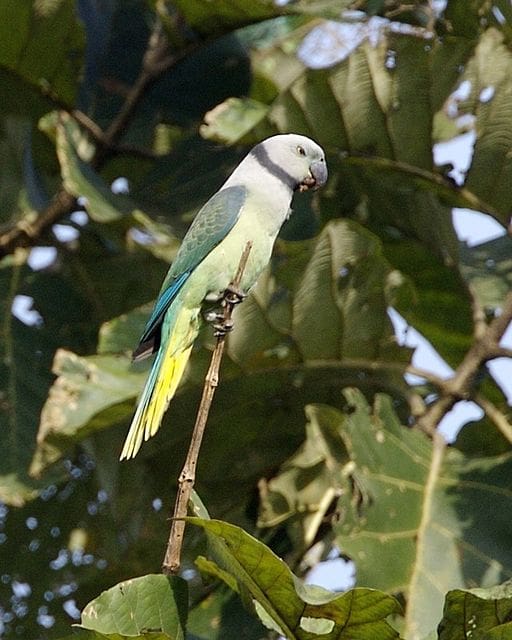

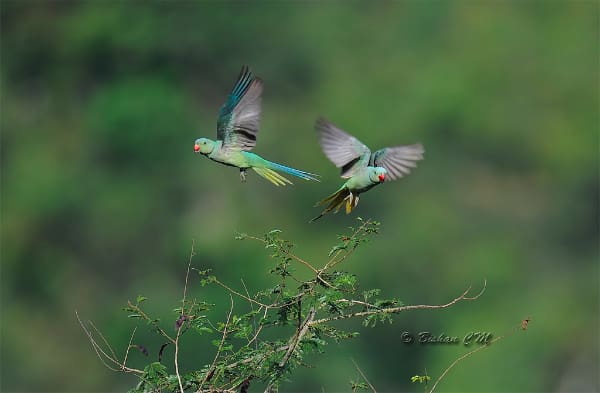
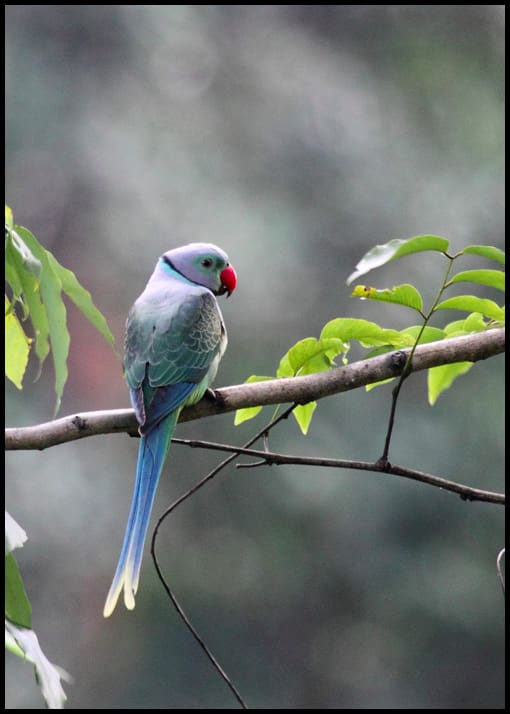
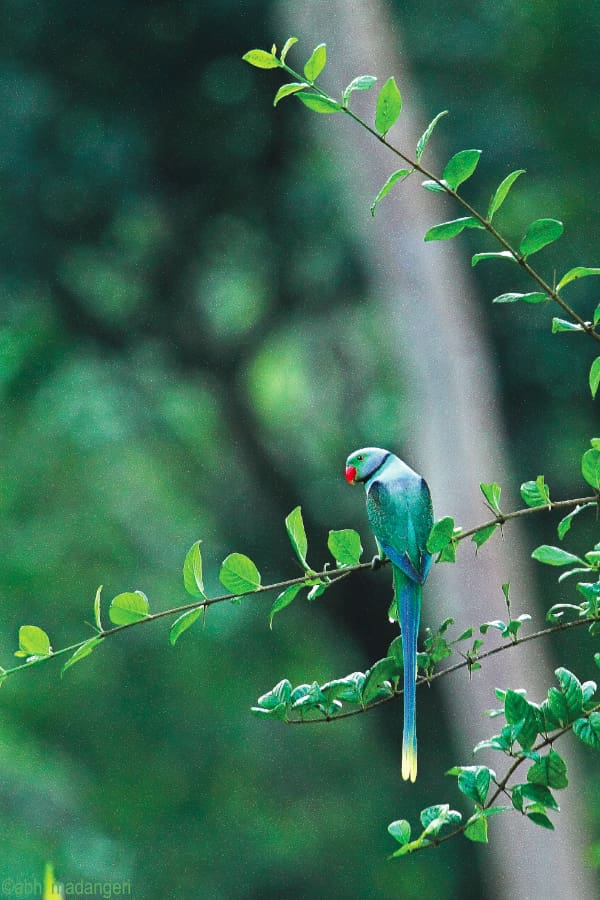
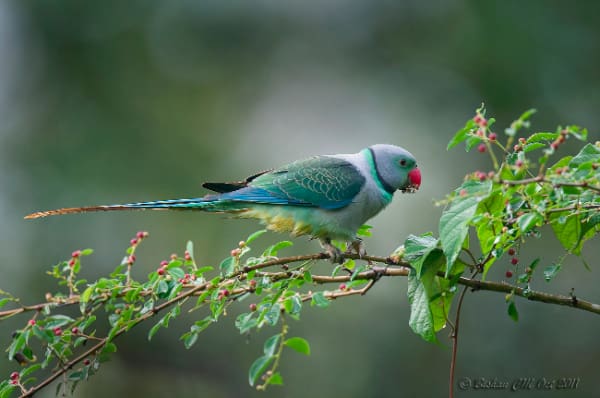
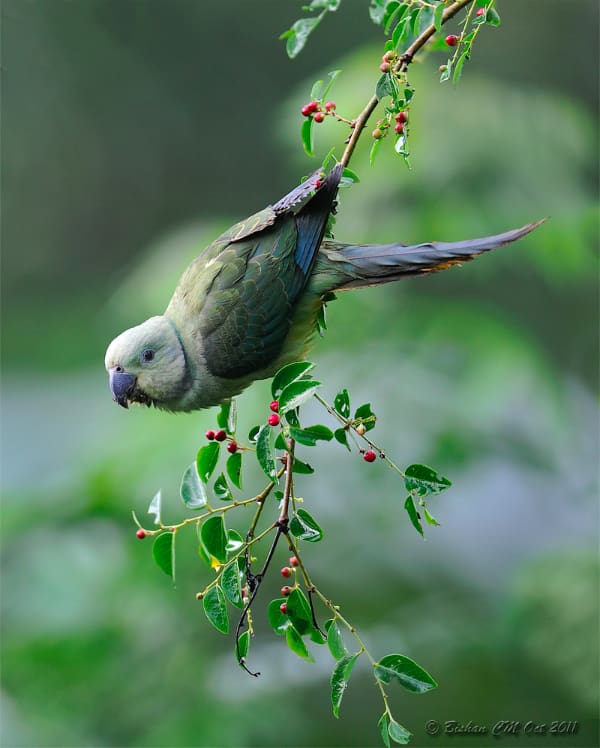
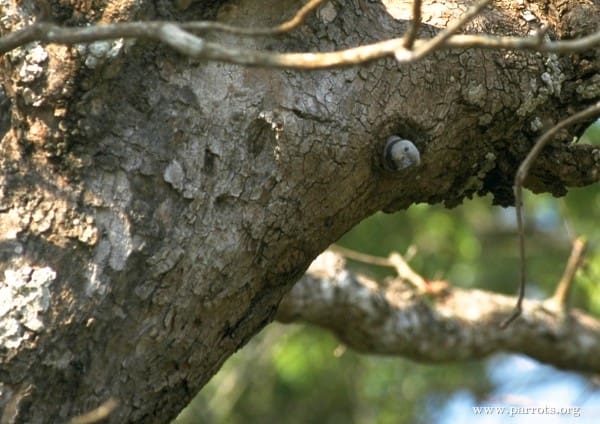
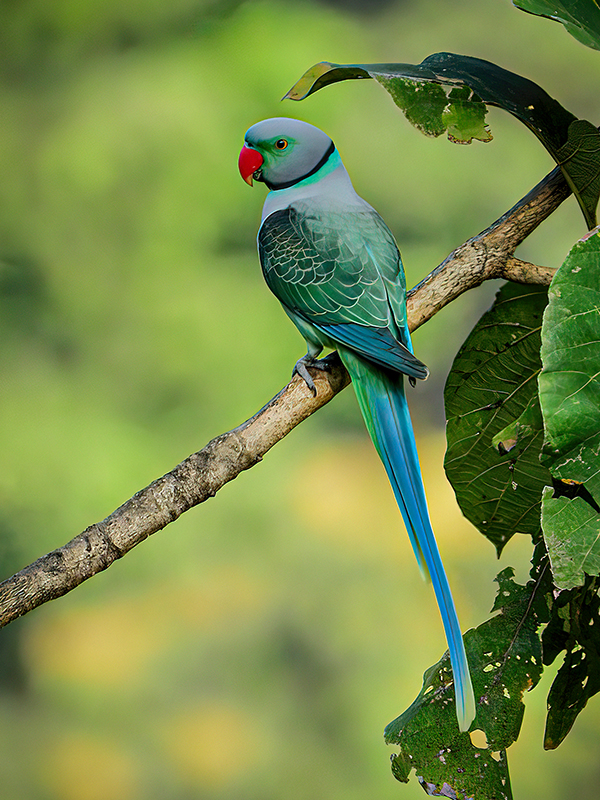
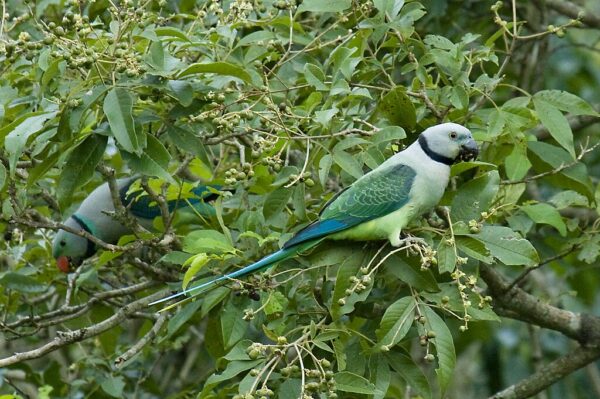
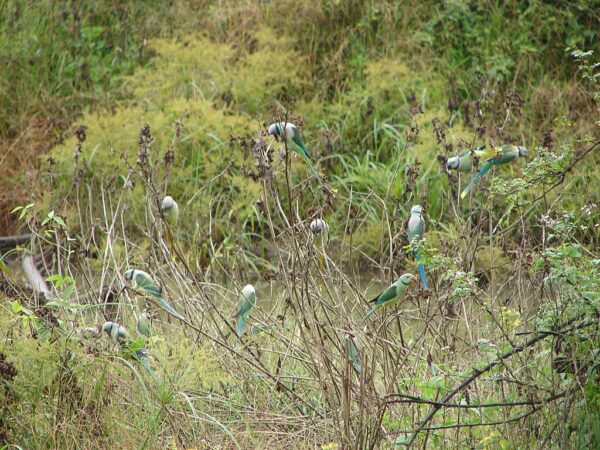
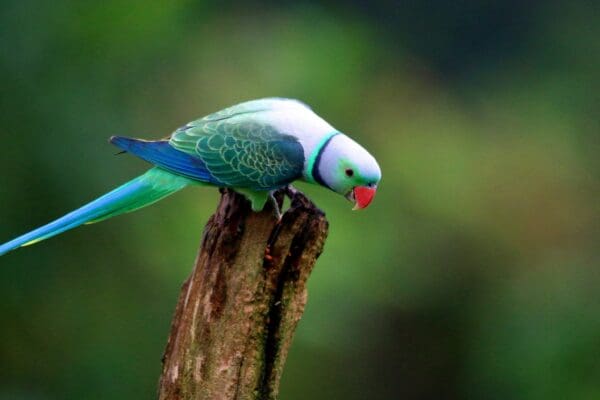
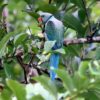
![© anuradhac [CC BY-SA 2.0] via Flickr A wild male Malabar Parakeet perches on a branch](https://parrots.org/wp-content/uploads/2023/01/wpt_Malabar-Parakeet_1280-20-100x100.jpg)
![© anuradhac [CC BY-SA 2.0] via Flickr A wild female Malabar Parakeet perches on a branch](https://parrots.org/wp-content/uploads/2023/01/wpt_Malabar-Parakeet_1280-19-100x100.jpg)
![© Haneesh KM [Public Domain] via Flickr A wild male Malabar Parakeet perches on a branch](https://parrots.org/wp-content/uploads/2023/01/wpt_Malabar-Parakeet_1280-18-100x100.jpg)
![© Srikaanth Sekar [CC BY-SA 2.0] via Flickr A wild female Malabar Parakeet perches on a branch](https://parrots.org/wp-content/uploads/2023/01/wpt_Malabar-Parakeet_1280-17-100x100.jpg)
![© derivative work: Snowmanradio (talk) Psittacula_columboides_(male)_-Kerala_-India-8.jpg: Lip Kee Yap [CC BY-SA 2.0] via Wikimedia Commons A wild male Malabar Parakeet clings to a branch](https://parrots.org/wp-content/uploads/2023/01/wpt_Malabar-Parakeet_1280-16-100x100.jpg)
![© Yathin S Krishnappa (Own work) [CC BY-SA 3.0] via Wikimedia Commons Wild Malabar Parakeets, female left, male right, perch in a tree](https://parrots.org/wp-content/uploads/2023/01/wpt_Malabar-Parakeet_1280-15-100x100.jpg)
![© Lip Kee Yap [CC BY-SA 2.0] via Wikimedia Commons A wild female Malabar Parakeet clings to a branch](https://parrots.org/wp-content/uploads/2023/01/wpt_Malabar-Parakeet_1280-12-100x100.jpg)
